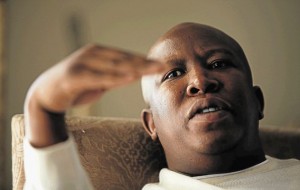Quote of the week
[T]he moral point of the matter is never reached by calling what happened by the name of ‘genocide’ or by counting the many millions of victims: extermination of whole peoples had happened before in antiquity, as well as in modern colonization. It is reached only when we realize this happened within the frame of a legal order and that the cornerstone of this ‘new law’ consisted of the command ‘Thou shall kill,’ not thy enemy but innocent people who were not even potentially dangerous, and not for any reason of necessity but, on the contrary, even against all military and other utilitarian calculations. … And these deeds were not committed by outlaws, monsters, or raving sadists, but by the most respected members of respectable society.
Eichmann in Jerusalem: A Report on The Banality of Evil
Juju’s chair
First, my alleged “last post” was obviously a clever ruse to see how the regular commentators on this blog would react to my imminent departure as guest author. For those who don’t read the comments (or think that there were none), suffice it to say that the commentators were all upset in their own way. I realized over the week-end that Pierre will only be back on 4 July, so that created room for one last word from me – from the blog-grave, as it were.
And it is about Julius Malema’s chair (so “serious” “readers” and “commentators” expecting “rigorous” “analysis” of “Law” and “Politics” should probably stop reading now). The urge to cease this final opportunity to name drop in high postmodern fashion (and I use that word deliberately – that is, “fashion”, not “postmodern”) came to me yesterday when I was reading the Sunday Times’ extraordinary interview with Juju. I have to say that the first thing that captured my attention was not the interview but the picture accompanying the interview, and, particularly, partially visible in the picture, the chair Juju was sitting on. Why, I asked myself, did this insignificant detail of the photograph grab my attention so powerfully?
This morning, it came to me: it was because of a book by Roland Barthes (there I go name-dropping again, tut-tut). For those who are still reading, in his celebrated book on photography, Camera Lucida, Barthes claims that there are some photographs in which the “co-presence of discontinuous elements” are present. The co-presence of these two elements creates a particular interest in the photograph for a viewer. The viewer often does not know why he or she likes the photograph or find it arresting, but there is something in it that makes the image linger in the mind. For Barthes it is because such an image carries these two discontinuous elements simultaneously. The first element could be referred to as the general field of the photograph: in our case, a frowning, frustrated-looking, slightly overweight man at pains to explain something to someone with the aid of a hand gesture. There are many such representations of Malema, gesturing as if we are the ones who simply do not get it. Barthes calls this the studium: “that very wide field” of “vague, slippery, irresponsible interest”. He says that we participate culturally in the aspects of the photograph’s studium in that viewing it activates for us a particular kind of cultural reaction according to how we consciously interpret the image: “him again, the wounded rabble rouser”, or “our hero, the betrayed” or “tenderpreneur in his house in Sandown”, whatever. The studium of the photograph is what affects us culturally in any photograph.
The second element of the arresting image Barthes calls the punctum. He writes that this element will “break (or punctuate)” the studium – “it is this element which rises from the scene, shoots out of it like an arrow, and pierces me.” And it is most often a detail, “a partial object”, something which is not necessarily intentionally part of the picture and which can often function as a metonymy – that is to say, as standing in for something else, although it has no ostensible / immediately apparent interpretative commitments or value. It is this presence of the punctum with the studium, then, that makes the photograph arresting, as opposed to simply another studied photograph.
So what was it about the presence of this chair in this photograph in a Sunday newspaper that grabbed my attention so much? Why this chair and not all the other, better pictures of chairs that you can find in any newspaper? I realized, having thought about it, that for me, the co-presence of this chair (detail) in this (rather done) study of Malema was what made all the difference. Perhaps because this chair, this punctum of the photograph of Malema accompanying this interview so subtly tells an entire story – of wealth (because the fabric of this chair appears so obviously luxuriant), of aspiration, of power (it is a big, comfortable chair), of a spectacular rise to nouveau riche status (the pattern and colour is unquestionably nouveau), of accumulation (the frame is sturdy and appears to be of high quality), of comfort (it reclines slightly). But this chair, one will notice, is not done in any primary colour – it in facts looks like the chair is covered in a fabric that can change colour depending on the angle of the light that falls on it, like a chameleon. And does this not also, unintentionally, tell a story (from “kill for Zuma” to ..?) And is there not also something tragic here (the chair looks like it could have come from the set of a Shakespearian tragedy)? Then again, to paraphrase Magritte’s painting of a pipe, this is not a chair, it is only an image of one.
Below: this is not the exact image that appeared in the print edition. A slightly larger version, showing more detail of the chair appeared in print.
BACK TO TOP


